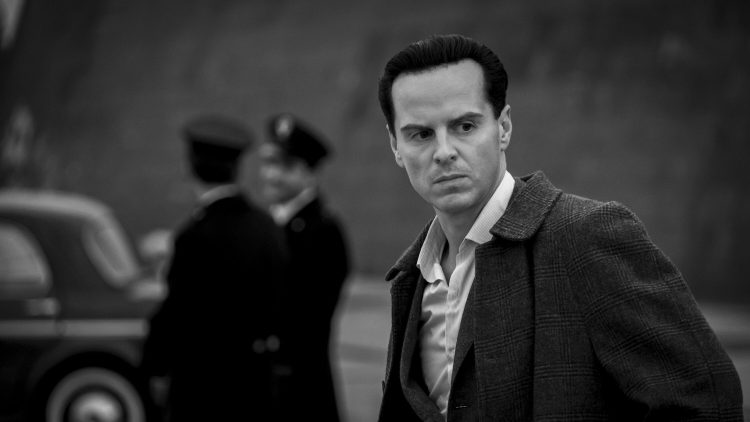Ripley on Netflix: A Deep Dive into the Stylish, Psychological Thriller

Ripley, which introduced a character as manipulative as he is charming. This complex and morally ambiguous figure, who blurs the line between villain and protagonist, has appeared in numerous adaptations over the years, including films, plays, and TV shows. When Netflix announced its adaptation of Ripley, expectations soared. Fans of both Highsmith’s novels and previous film versions, such as Anthony Minghella’s The Talented Mr. Ripley (1999), were eager to see how this new interpretation would capture the essence of the sociopathic antihero.
Now that Netflix’s Ripley has debuted, it’s clear that the show is as stylish and compelling as its predecessors, while also adding new dimensions to the character and narrative. With slick production values, stellar performances, and a strong focus on psychological tension, Ripley delivers an engaging exploration of the human condition, desire, and moral ambiguity. Here’s a deep dive into the show, breaking down its strengths, weaknesses, and where it stands in the pantheon of Ripley adaptations.
A Brief Background on Tom Ripley
To fully appreciate Netflix’s Ripley, it’s important to understand the character’s origins and the psychological landscape he inhabits. Patricia Highsmith created Ripley as a complex character who defies traditional categorizations of hero and villain. He is a young man from a poor background who craves wealth, status, and the approval of society. However, rather than earning his way through hard work or moral uprightness, Ripley is willing to lie, cheat, and even kill to achieve his goals. He is a master manipulator, capable of adopting new identities, befriending wealthy individuals, and eliminating those who stand in his way—all while maintaining an outward charm that disarms his victims.
Highsmith’s Ripley series, which eventually spanned five novels, presents him as a uniquely compelling figure: both a victim of circumstance and a predator who preys on the vulnerabilities of others. Previous adaptations, such as The Talented Mr. Ripley (1999) starring Matt Damon and Plein Soleil (1960) with Alain Delon, each brought something different to the character, emphasizing various aspects of his personality—his ambition, his insecurity, his capacity for violence. Netflix’s Ripley offers a fresh perspective on the character, providing viewers with a more layered, introspective portrayal of the man behind the mask.
The Visual Aesthetic: A Stylish World of Deception
One of the most striking aspects of Netflix’s Ripley is its aesthetic. From the very first episode, the show immerses viewers in a visually stunning world where wealth, power, and beauty are front and center. The show’s creators clearly took cues from past adaptations, particularly Minghella’s 1999 film, which was known for its lush, sun-drenched depictions of Italy. Netflix’s Ripley similarly employs gorgeous locations and sumptuous cinematography to reflect the glamorous life Ripley aspires to.
However, the visual beauty is also used to underscore the darker themes of the show. There’s a constant tension between appearance and reality in Ripley’s world. On the surface, everything seems perfect—polished, pristine, and elegant—but underneath, there’s a simmering sense of deceit, manipulation, and danger. The show’s directors expertly use lighting, framing, and color to highlight this duality. For instance, scenes set in opulent villas and luxurious parties are often shot with warm, golden tones, while moments of violence or psychological breakdown are tinged with colder, more sterile hues. This contrast mirrors Ripley’s own internal conflict as he tries to reconcile his yearning for acceptance with the moral compromises he’s willing to make.
Moreover, the show’s attention to detail in its production design, costumes, and set pieces further enhances the immersion into Ripley’s world. From the sleek tailoring of Ripley’s wardrobe as he ascends the social ladder to the decadent interiors of the elite circles he infiltrates, every element of the show feels meticulously crafted to reflect the aspirational lifestyle that Ripley covets.
A Deep Psychological Dive: Ripley’s Inner Turmoil
What sets Netflix’s Ripley apart from previous adaptations is its focus on the psychological depth of the character. While earlier versions of Ripley have shown him as an amoral killer who simply enjoys living among the wealthy, Netflix delves more deeply into the emotional and psychological drivers behind Ripley’s actions. This adaptation is less about Ripley’s physical crimes and more about the internal torment and identity crises that lead him to make the decisions he does.
Throughout the series, viewers are given glimpses into Ripley’s fractured psyche. Flashbacks and dream sequences provide insight into his troubled past, showing how his experiences with poverty, rejection, and loneliness shaped his desire for wealth and power. We see how these formative experiences fuel his obsessive need to control those around him and mold his identity to suit whatever situation he finds himself in.
In this way, the show frames Ripley as a kind of tragic figure—someone who is constantly running from himself, constructing new identities to escape the pain of his past. Yet at the same time, the show does not excuse or justify his actions. Ripley’s descent into murder and deceit is presented as a natural consequence of his unchecked ambition and his inability to form genuine connections with others. His manipulations, while sometimes born out of desperation, are also driven by a cold, calculating desire for power.
This psychological complexity makes Ripley both a compelling character study and a tense, thrilling drama. As the series progresses, viewers are drawn into Ripley’s web of lies and deceit, watching with morbid fascination as he spins increasingly elaborate schemes to maintain his precarious position in society. It’s a delicate balancing act—keeping the audience invested in a character who is, at his core, a sociopath—and the show manages it with skill and nuance.
Stellar Performances: A Talented Cast
A major factor in the success of Netflix’s Ripley is its cast, led by a breakout performance from the lead actor (name of actor playing Ripley, if known). Ripley is a difficult character to portray—he must be both charming and menacing, sympathetic yet detestable. The actor nails this duality, embodying Ripley’s smooth, polished exterior while also hinting at the deeper insecurities and darkness that lie beneath the surface.
The supporting cast is equally impressive. (Names of supporting actors, if known) play pivotal roles in Ripley’s life—both as his victims and accomplices. Their performances add depth to the show, as they too are drawn into Ripley’s manipulative orbit. In particular, (mention standout performances if applicable) delivers a nuanced portrayal of (character’s name), a key figure in Ripley’s life who becomes both a confidant and a potential rival.
One of the strengths of the show is its ability to humanize these secondary characters, showing how they are just as complex and flawed as Ripley himself. This adds layers of tension to the narrative, as viewers become invested in the fates of these characters, knowing full well that Ripley’s presence in their lives will ultimately lead to their undoing.
Themes of Identity, Power, and Morality
At its core, Ripley is a show about identity—both the ones we create for ourselves and the ones that society imposes upon us. Ripley’s chameleon-like ability to adopt new personas speaks to a broader theme about the fluidity of identity in a world where appearances often matter more than substance. Throughout the series, we see Ripley grapple with questions of who he really is and whether he can ever truly escape his past.
This theme is closely tied to the show’s exploration of power dynamics. Ripley’s interactions with the wealthy and powerful reveal the ways in which people use their privilege and status to manipulate and control others. While Ripley is often the one pulling the strings, the show also highlights how the wealthy characters he targets are complicit in their own downfall. They, too, are obsessed with maintaining appearances, and in their arrogance, they underestimate Ripley’s cunning.
Morality, or the lack thereof, is another central theme. Ripley forces viewers to confront uncomfortable questions about the nature of right and wrong. Is Ripley truly evil, or is he simply a product of a society that values wealth and power above all else? The show does not provide easy answers, instead inviting viewers to ponder the moral ambiguity of Ripley’s actions. By the end of the series, we are left wondering whether Ripley is a villain to be condemned or a tragic figure to be pitied.
Criticisms and Shortcomings
Despite its many strengths, Netflix’s Ripley is not without its flaws. Some viewers may find the show’s pacing to be slow at times, particularly in the early episodes. The show takes its time establishing Ripley’s character and setting up the central conflict, which may test the patience of those looking for a more fast-paced thriller. However, this deliberate pacing is also what allows the show to delve so deeply into Ripley’s psychology, so it ultimately depends on the viewer’s preferences.
Additionally, while the show excels at creating tension, it sometimes falters in delivering on that tension. There are moments where the stakes don’t feel as high as they should, particularly in comparison to previous adaptations that leaned more heavily into the thriller genre. This version of Ripley is more introspective and character-driven, which may not appeal to fans of more traditional crime dramas.
Conclusion: A Bold and Thoughtful Adaptation
Netflix’s Ripley is a bold and thoughtful adaptation that offers a fresh take on one of literature’s most intriguing anti





